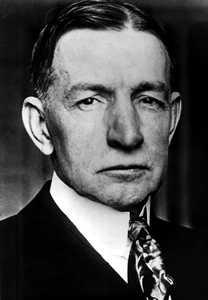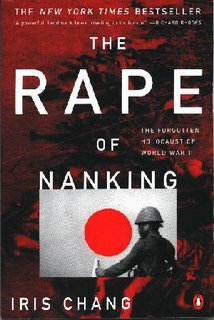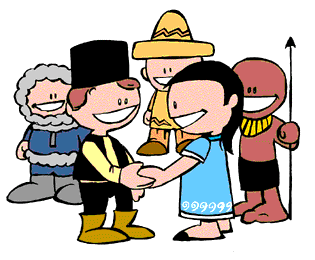
Part Three: All That Glitters is (Still) Gold
The European Economy 1914-2000
Derek H. Aldcroft(2001)
If I can pinpoint the frames of reference for the world's continued interest in gold it would have to be that it is shiny and heavy. It catches the eye like no other metal. That makes speculators seem as magpies. But is an accurate depiction of speculator. An investment opportunity catches the eye, it is lifted away and hoarded in a nest until someone with something brighter and shinier comes along and a transaction is made. But what else could reasonably take its place in the shine department? When I was living in the UAE I was amazed at how many shops hung the stuff from their windows in block after block of tangible assets. It drew in crowds. There was a hum in the air. It was gold. Whole fleets and flocks of it. I caught a little bit of that gold bug. My suspicion that gold was something worth having around was not just based on my visits to Dubai Gold Souk. It took more than rich people hanging around it to pass on that flu.
I caught it in about 2002 following extensive travels around South India and Sri Lanka. Bobbing along on tuk-tuks in and around cracks and fissures where buses sink in to the pavement up to their axles from Madekeri to Tirumali and Tirupati and back twice. Shaking and shimmying around for about two and a half months, I concluded that a large proportion of current and future customers of the shiny stuff still remain working class or rural farming class in the billions in the developing world. Whenever I would pop in to the only ATM in town sometimes, or the only bank for miles to cash travellers cheques, there was always a little lean-to annex attached. There is no neutral movements of gold bullion in these nations. (Still) nothing seems to beat it.
Peaking inside to see why there were always so many people in those little annexes, I finally discovered that gold remains a principal collateral on small and short-term loans in most of the developing world. Banks are keen to get at it, hold on to it if they can, and scratch high exchanges out of it in their own favour off the working classes. Individual holders of gold are keen to use it as collateral because they hold few other easily convertible, tangible assets. Banks have a hard time liquidating spare pigs, cows, or chickens. It all looked and smelled like loan-sharking. Rings, baubles, beads, and chains, all being scratched and scored, weighed and chemically tested for purity, all a regular part of local credit union plans. Only part valuations are given on such pawn-like arrangements. But truly those little annexes were always the busiest departments in any of the banks I visited in the rural areas of that region of the world.
Countries like India also exemplify the issues of gold as trades and currency-based commodity exchange for centuries. So many cultures, so many languages, so many potential reasons to disagree on the values of trade currencies and commodities prices. So many extralegal markets. Too true. But not only because of a desire to evade the law. An area where microcredit really should steal the show. But most banks seem to like things as they are. If every business community somehow lived on a Pacific atoll then everyone there could easily agree that shiny small shells, particulary rare, or especially exclusive agates or pebbles might act as a trade currency agreed by all. Not so in a world of discord, comparative advantages, disadvantages,languages, and cultures. So I began to read a little about gold. The most interesting fact? It reached its highest recorded monetary value in a day of speculatorial madness. It was the day Columbus returned to Spain and told all that there was an entire other continent out there waiting to be pillaged (Sorry. Discovered?). It rose to somewhere in the region of five thousand US dollars an ounce on that day.
By Roman times, currencies had evolved highly from the concept of carrying around large stone wheels on sticks. One of my old buddies is a rabid coin collector and Classics MA. His penchant was holding and still hoarding a coin from each of the Emperor's reigns. My idea of collecting gold was much more immediately tangible. I prefer Swiss assayed and registered gold ounces. For a period of about seven months I accumulated my gold horde. And stopped. I think that is when I started studying business. I bought in to the real deal at around 250 USD an ounce. Not for any reason other than a desire to have that shiny gold stuff around. Maybe it would come in handy some day? It certainly has doubled in value in three years. My own prediction on gold prices from 2003 can be confirmed with a certain Investor's Group salesman in the Annapolis Valley. I told him the stuff would hit 500 within two years. And it did. Sometimes research is really on the ground, not on a trading floor, not in a bank. Sometimes research can be an accumulated revelatory process, like a tangible asset of the mind panned from real world experiences. This may also be the first time I have offered such a nugget of a mere suggestion that what I have gathered, worked over, and written here does not exclusively originate from the reading of good books.
For the Europeans at the turn of the century, gold was causing real problems for current accounts balances. Global currencies were mushrooming due to local London and continental exchange markets, and the US banking industry, the growth cycle, all were putting serious stresses on international gold reserves management. Like the little assayers (with pinching fingers) of India or China today, banks could only issue national currencies for international exchange if their valuations were guaranteed by comparable holdings in gold. It was like a guarantee for speculators and traders to use paper currency. The more business transactions they did, the larger the scale of their trade, the larger their billfolds grew, the greater numbers of transactions across national borders, the more numerous the bank reserves exchanges. Basically, gold could not keep up with the shifts of liquidity which a boom in international imports and exports from increasingly distant lands demanded.
In the early 1920s Germany was having real difficulty forging a recovery and stabilizing currency exchange according to Aldcroft. Inflation rates were a double edged sword. On one hand it encouraged capital investment but also impacted upon production and real wages. One solution to the problem was to assess taxes on terms of gold because currency valuations were so unstable. This is also an issue in China and India today because in the first case, currency exchange rates are artificially maintained by government fiat. Furthermore many Chinese, probably most Chinese are prevented from speculating on their own currency. It is like rent control. In the second case, currency speculation has been India's bane for decades. One would expect a stronger, tighter managerial grip on that one. All the time, at the ground level, in all cases, gold seems to find an exchange valuation which is not always at posted rates. It floats on localized demands and dimensions. It is much more reasonably a reflection of true valuations in such cases.
Collectively the Europeans sought to stabilize currency exchanges, it was in their interest considering their debt loads and who they had to pay, each other, and their Big Brother. Aldcroft details national efforts in France. The French increased taxes to boost federal revenues, lowering public capital spending, and began to fund its debt load. Aldcroft notes that Europeans long disagreeing, enough to fight the largest war ever, now agreed that the solution to currencies restabilisations would be a return to the gold standard. Mostly long on pomp, short on cirumstances arrangements. Post-war gold standards were not fully supported by bullion reserves. An agreed to design on a cart without the horses was an agreed upon solution.
Many nations simply substituted the shiny stuff for foreign exchange currencies. Aldcroft submits that 42% of total national reserves in 1927 were composed of foreign currencies compared to around 12% in 1913. This made sense at the time, it still makes sense to many today. But this was not just a transition away from bullion, it was a closer approximation of debt and creditor linkages, responsibilites to which appear almost old school, which existed post-war and were a result of over-nationalisation of economies prior to the war. A collective financial mea culpa? Competition among markets was nationally-based, and more linear in 1913. All of a sudden a new reality of foreign reserves made sense because a whole number of new payments and exchanges needed to be made.
These new linkages provided new currents and streams for competitive interest rates and exchange rates, so higher volatility flows now existed, which in turn put new stresses upon sterling and dollar gold reserves. Many of these reserves had effectively been accumulated through the emptying of net-debtor European gold bullion reserves, filtered out to pay interests and debt loads payments. Aldcroft mentions the word "pyramids" (insert "schemes") to explain how short-term debts with high interest rates began to be the sole support for outstanding long term war debts. Foreign currencies could then be held to stabilize local currency as a faster flowing method to curb sharp appreciations or depreciations in national currencies.
However every nation was buying and selling at the same time; net benefits of buying and selling foreign exchange were at times hard to discern. Everytime a crackling national fire was put out another to start elsewhere because of insufficient management of the local economic pillars on the loads. Micro-cracking of the entire system bled it from the inside from the beginning of its reorganisation. It is as if no dead load requirements had been placed on the structure of the gold standard during this period.
So the gold standard collapsed fantastically in the 1930s as Aldcroft describes. The net movement of gold out of bullion reserves in Europe had mostly bypassed London and headed straight to New York to directly service debt. These currencies still represented the option to exchange currencies for gold convertibility versus foreign currency exchanges which were proving a crapshoot anyway. But US dollars were well insured by that gold. So as European currencies were heavily traded, their collective control shifted clearly over international currency exchange trading from London to New York.
Naturally because the US dollar was supported by more gold. It was now more secure as a defacto global currency, not only because of the gold. Aldcroft reveals that in the rush to stabilize, several nations perpetuated parity rates which bore no connection to reality in exchange rates and currency values. There was no purchasing power parity among nations, no comparative indexing. Thus there were no real debts payments parities. No deflations could take place in nations, such as Britain, where high unemployment rates demanded higher inflation rates.
So gold flowed out of most nations and into a glittering few. By the end of the 1920s 65% of the world's gold was held in the United States, France, and European neutral states according to Aldcroft (Insert Switzerland). Up from 54% in 1913. Also up were their effective controls of currencies exchange markets, mostly stealing the wind from Old Order British sails. This is reflected in British proportions of assets to liabilities, which grew to four times debt to equity. Which represented the greatest liabilities and the smallest gold reserves in any exchange currency market. Inappropriately fixed exchange rates, a result of a failure to adequately implement a gold standard recovery would implicate a perennially discussed fall. 1929.













































